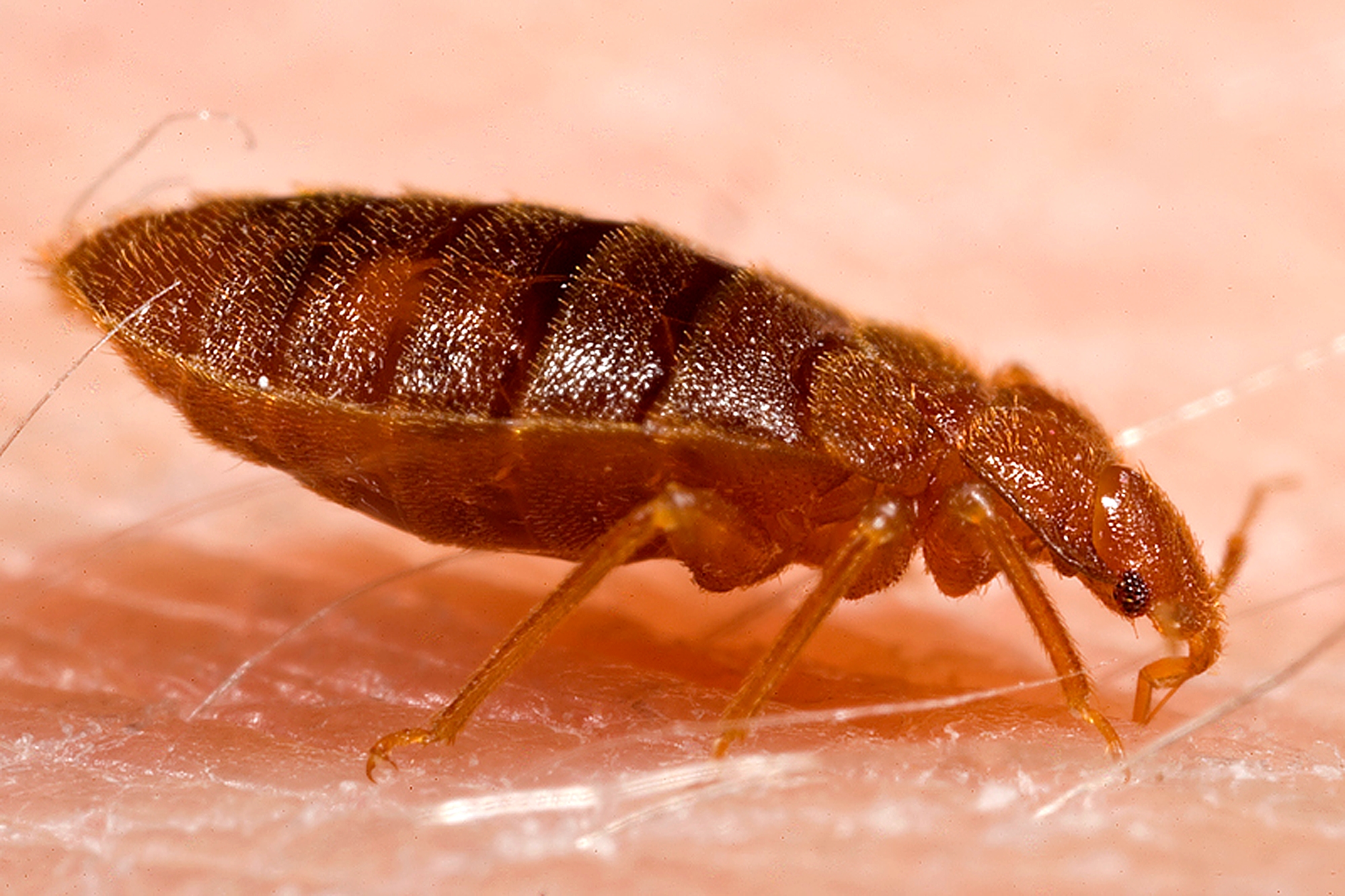Discover the Ideal Bed Insect Therapy Techniques for Your Pest Control Strategy
When encountered with a bed pest infestation, identifying the most effective treatment methods comes to be crucial for successful bug control. Choosing the finest bed pest therapy approach customized to your specific situation is vital for accomplishing long-term outcomes.
Identifying Bed Bug Infestations
Determining indicators of a bed bug infestation can be vital in properly resolving the problem and protecting against additional spread in a prompt manner (Bed bug treatment). Bed bugs are evasive pests that hide throughout the day and come out in the evening to feed upon blood. Typical indicators of a bed pest invasion include reddish-brown discolorations on bed linen or furnishings from smashed bugs, small dark places that are bed insect excrement, dropped skins in locations where bed insects hide, and a sweet, stuffy smell in severe problems
Among the essential indicators of a bed pest issue is waking up with inexplicable welts or bites on your skin, specifically in a direct or clustered pattern. It is essential to extensively check your sleeping location, consisting of the cushion, box springtime, headboard, and close-by furnishings for real-time insects or indicators of their presence. Trigger recognition of a bed bug problem is vital to stop the situation from intensifying and requiring a lot more comprehensive therapy techniques. If you suspect a bed bug invasion, it is recommended to look for professional parasite control support to properly remove the insects from your home.
Non-Chemical Treatment Methods
Non-chemical treatment approaches provide effective options for dealing with bed pest invasions without counting on traditional chemicals. Heat therapy is one such method that includes elevating the temperature in plagued locations to levels that are lethal to bed pests. Furthermore, vapor treatment can be utilized to eliminate bed pests and their eggs by subjecting them to high temperature levels, making it an important non-chemical alternative for combating infestations.
Chemical Treatment Choices
Having actually explored efficient non-chemical approaches for dealing with bed bug problems, it is necessary to think about the efficacy of chemical treatment alternatives in combating these resilient bugs. Chemical therapies play a crucial function in bed pest control, especially in serious invasions where non-chemical approaches might not provide adequate alleviation. There are numerous kinds of chemical treatments offered for dealing with bed pests, including pesticides, desiccants, and insect development regulatory authorities.
Pesticides are typically utilized to eliminate bed pests on call and deal recurring defense against future infestations (Bed bug treatment). Desiccants work by damaging the external waxy layer of bed insects, causing dehydration and death. Insect growth regulators interfere with the bed pest life process by preventing their advancement from nymphs to grownups, inevitably minimizing the populace in time
When thinking about chemical treatment options, it is essential to prioritize safety and security by adhering to tag guidelines, making use of ideal safety gear, and considering the prospective threats to humans and pets. Consulting with an expert bug control service can help establish one of the most secure and efficient chemical treatment for your details bed insect infestation.
Integrated Parasite Administration Techniques

IPM techniques for bed bug control might consist of detailed evaluation to identify the extent of problem, identification of key harborage websites, and application of sanitation actions. Furthermore, decreasing clutter, securing fractures and crevices, and getting rid of potential concealing spots can aid prevent bed insects from developing themselves.
Moreover, non-chemical control techniques such as heat therapy, vacuuming, heavy steam cleaning, and using bed pest catches can be reliable components of an IPM strategy. These techniques target bed pests at various life phases and disrupt their reproductive cycle, leading to population reduction.
Routine tracking and follow-up evaluations are vital in IPM to assess the efficiency of control actions and make necessary adjustments. By incorporating integrated bug monitoring methods right into your parasite control strategy, you can achieve long-term success in taking care of bed bug invasions.
Expert Extermination Solutions
Specialist elimination solutions provide specialized proficiency and resources for successfully eradicating bed bug invasions. Bed pest invasions can be specifically challenging to tackle as a result of their resilience and capability to conceal in various fractures and crevices. Professional pest control specialists are trained to identify the signs of bed pests, situate their hiding places, and use targeted therapy techniques to eliminate them effectively.
When selecting an expert elimination solution for bed pest control, it is necessary to search for licensed and certified parasite control business with experience in dealing specifically you can check here with bed pests. These specialists have accessibility to a series of treatment alternatives, including chemical and non-chemical techniques, to successfully fight bed bug problems while guaranteeing the safety of pet dogs and passengers.
Furthermore, professional pest control operators can supply follow-up evaluations and treatments as required to ensure that the problem is completely eliminated. Their competence in bed bug actions and treatment protocols can aid avoid future infestations, providing satisfaction for businesses and homeowners alike. When confronted with a stubborn bed insect problem, getting the solutions of expert exterminators is often the most trusted option to achieve full eradication.
Conclusion

When faced with a bed pest problem, recognizing the most efficient therapy approaches comes to be essential for successful pest control. Common indicators of a bed bug invasion include reddish-brown stains on bedding or furniture from crushed check my site pests, tiny dark areas that are bed pest excrement, shed skins in areas where bed bugs hide, and a sweet, stuffy smell in severe infestations.
Having checked out reliable non-chemical approaches for resolving bed pest invasions, it is important to think about the efficiency of chemical therapy choices in combating these resilient pests. Chemical therapies play a critical role in bed pest control, especially in serious invasions where non-chemical methods may not offer adequate relief. By incorporating these various treatment approaches right into a detailed pest control strategy, people can properly manage and eliminate bed pest problems in their homes or companies.